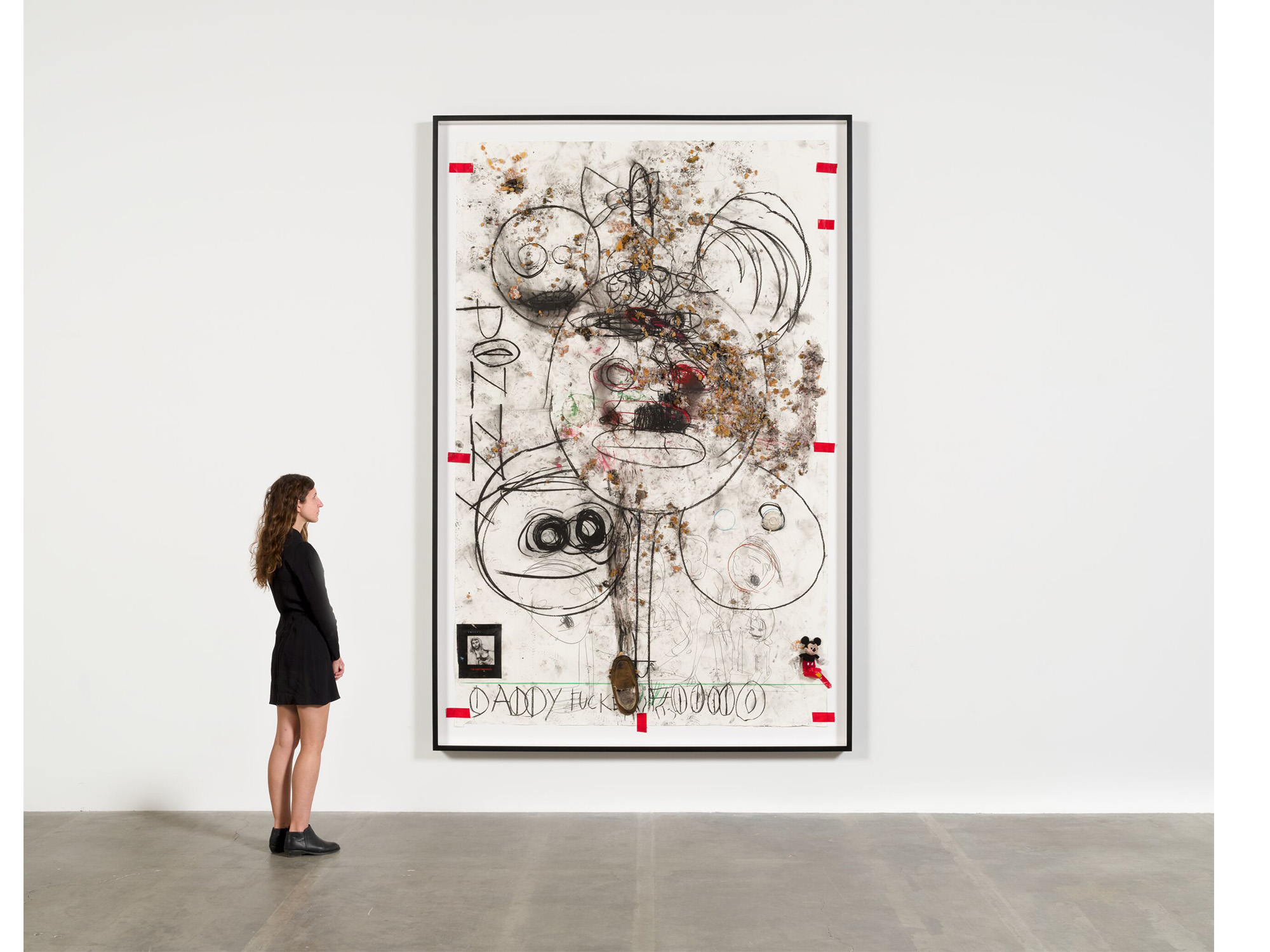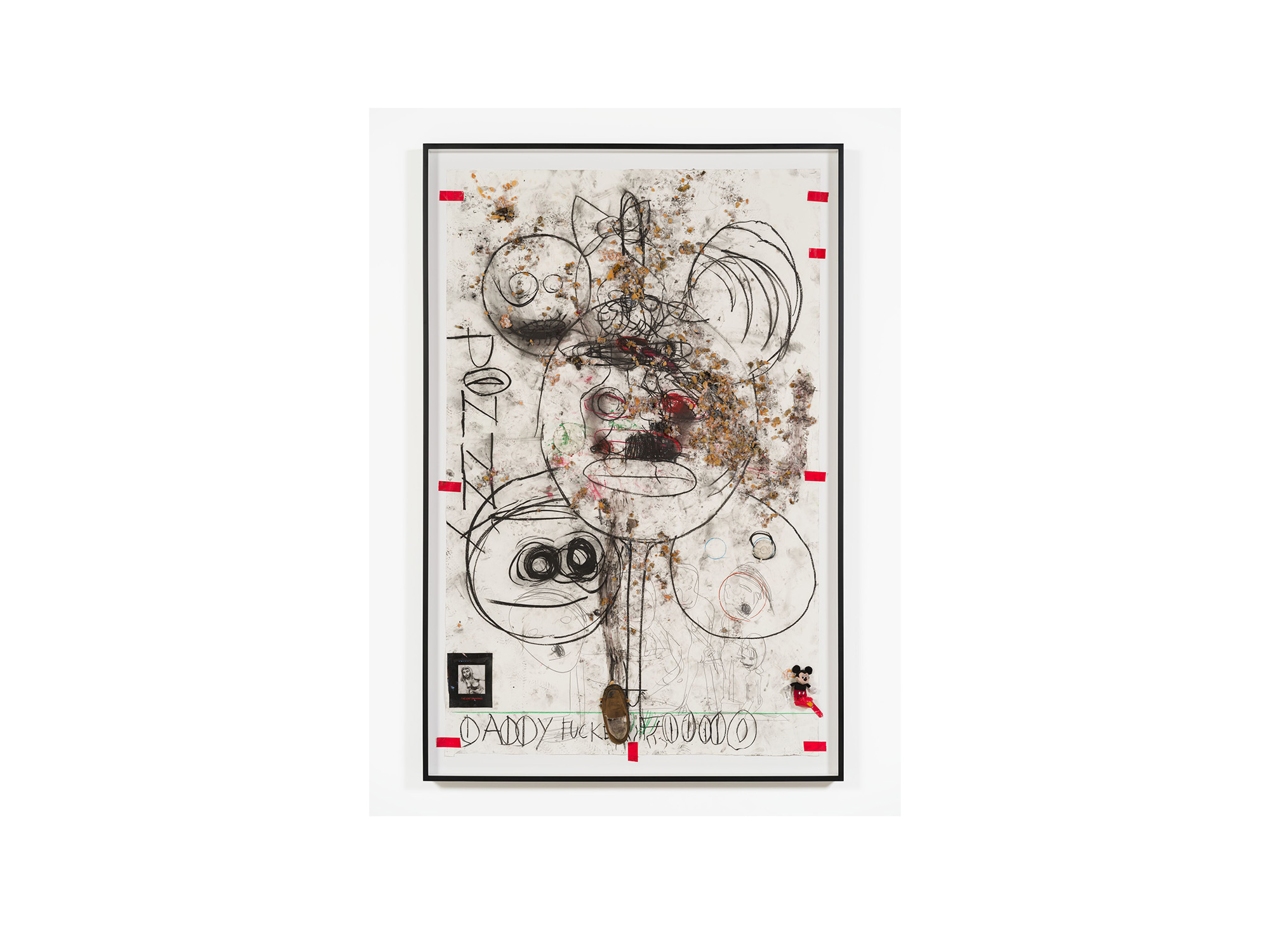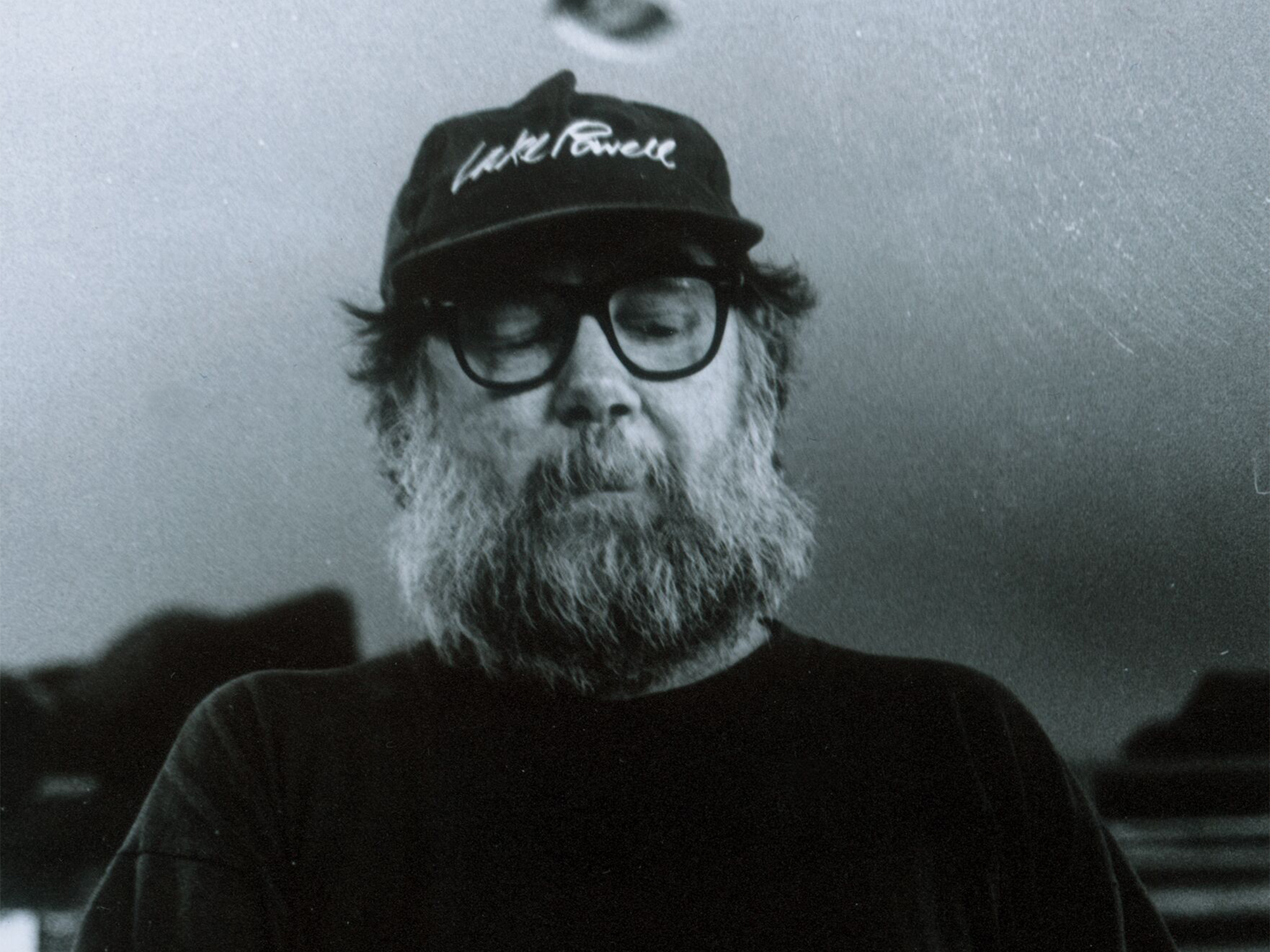Paul McCarthy
A&E, POZZZY, Santa Anita session
A&E, POZZZY, Santa Anita session
$500,000
Paul McCarthy
A&E, POZZZY, Santa Anita session
2021
Pencil, charcoal, oil stick, collage, shoe, dishes, stuffed.animal, foam stuffing and tape on paper
288.3 x 182.9 cm / 113 ½ x 72 in
309.9 x 204.5 x 11.4 cm / 122 x 80 ½ x 4 ½ in (framed)

Striking in scale, ‘A&E, POZZZY, Santa Anita session’ (2021) exemplifies the irreverent humour and biting satire of Paul McCarthy’s unorthodox practice. This visually striking work on paper stems from McCarthy’s recent multidisciplinary ‘A&E’ project (2019 –) created during a series of freely improvised drawing sessions, or ‘performances’ between McCarthy and German actress Lilith Stangenberg.
‘My feeling is the art world is changing and my work is dealing with subjects that are extreme. But the subjects are real. Violence is in our world—actual and portrayed. I’m trying to deal with how media, power, fascism, and sexuality are intertwined in this swamp.’—Paul McCarthy [1]
‘A&E’— a title that refers to Adolf & Eva, Adam & Eve, and Arts & Entertainment — reveals McCarthy’s uncompromising take on the consequences of repression and the willfully ahistorical nature of American politics. Comprised of paintings, videos, performances, sculptures, books, virtual reality and more, ‘A&E’ confronts the complex mechanisms of power and desire through garbled and garrulous renderings of Adolf Hitler and Eva Braun by McCarthy and his collaborator Lilith Stangenberg.


Through a blend of abstraction and figuration and a mélange of drawing and collage, McCarthy cleverly evokes themes of violence, death, sex, and politics. ‘A&E, POZZZY, Santa Anita session’ brings together the materials and rough-hewn gestures consistent throughout the artist’s career: crude smears and whiplash strokes shape several rudimentary faces, while a closer inspection of the work reveals a highly textural surface. Embedded into the paper is an absurd array of quotidian objects: a teacup, a slipper, and a stuffed Mickey Mouse doll.
A deft draftsman, McCarthy has incorporated drawing into his performances since the 1970s. In these drawn works, McCarthy conveys a myriad of nefarious male figures culled from Hollywood, fairy tales, soap operas, comic books, Disney, and contemporary politics. Assuming these alternate identities, McCarthy executes his drawings in character. For McCarthy, the physicality of mark making and the power of gesture serve to express his characters’ psychological fervour.

‘I believe there is a difference between the actual violence, abuse, chauvinism, and racism that exists in the patriarchal, tyrannical, hierarchical society that we are living in and the work we are doing. We try to frame the images as a form of language. The violence is not actual. The actions are a form of theatre, and those involved understand this intention.’—[2] Paul McCarthy




